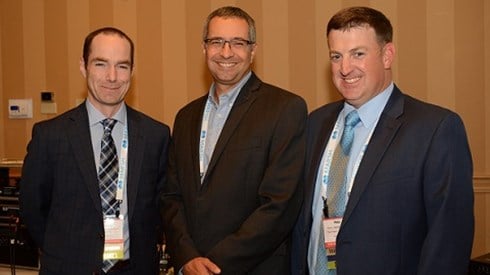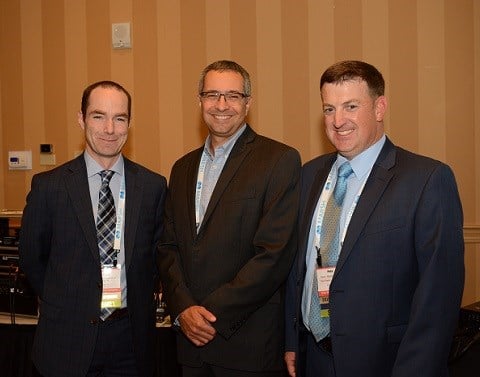Vermont Agency Captive Insurance Law Details Revealed

August 15, 2017 See Related Articles and Videos

Governor Phil Scott signed the Vermont Captive Insurance Association (VCIA) captive bill (H.85) on May 1. According to VCIA's Annual Impact Report for 2016, "the law added agency captives to the types of captives that can be formed in Vermont, which is a reinsurance company formed by an agency or brokerage. Agency captives create a long-term relationship between the agency and the insured, where interests are aligned: risk appetite, selection, pricing, loss control, claims management, etc. The bill also makes a number of technical amendments to continue to streamline Vermont's captive laws and regulations."
The new option was discussed in the panel "Secret Agent(cy) Man (Agency Captives)" at the VCIA 2017 Annual Conference.
The session's panel included Jesse Crary, shareholder, Primmer Piper Eggleston & Cramer PC; Bob Gagliardi, global director of captive management and US fronting, AIG Insurance Management Services; and Peter J. McDougall, attorney, Paul Frank + Collins PC.
Unlike traditional captive structures, an agency captive (aka "agency-owned captive" or "producer-owned captive") is not controlled by its insureds. While such captives are not new to the fold, they are often embedded within existing law. The new Vermont law is considered much cleaner and clearer.
Mr. Crary advised that Vermont has given "teeth" to the law to benefit and protect the insured. Requirements under the law include the following.
- The captive is subject to a minimum capital requirement of $500,000.
- The captive must be "owned or directly or indirectly controlled by one or more insurance agencies or brokerages."
- The agency/broker with ownership/control over the captive must remain in regulatory good standing.
- The captive must only insure risks of commercial insurance placed by agency/broker-owner (i.e., must have a fronting carrier).
- The captive must disclose to the policyholder the nature of its affiliation with the broker/agent and relative limitations, rights, and obligations of the captive as compared to the policyholder (i.e., a policy disclosure that is readily visible to the insured/reinsured that the broker has an affiliated company reinsuring the policy with a financial interest in the transaction). The broker has the duty to place the best coverage where the potential for conflict is clearly revealed via such a notice.
Mr. Gagliardi noted that the goal is for the agent/broker to share in the profits with the carrier while holding a stake in improving the loss results. Everyone wins because advantages are created on both sides (insured and agent/broker). The fronting carrier likes the scenario because the agent/broker has put "skin in the game" in the form of capital and risk. This alignment will also create improved underwriter/broker communication to get the best coverage placed at the best price. The agent/broker also has additional opportunity to brand and bundle the captive with other services the agent/broker provides.
In this transaction, the fronting carrier will retain a fronting fee, taxes, excess of loss coverage, and premium (as applicable for any risk transfer it retains). The captive will retain the underwriting profit and investment income with the future potential to release dividends back to the agency (parent).
The best business for consideration in an agency captive arrangement includes profitable business, business where the agent can influence the claims experience through loss control, and program business of any line that is homogeneous in nature (customers in the same industry or part of a trade association).
Potential concerns exist surrounding the need for the agent to put up capital/collateral to the carrier, the potential for the captive to lose money and dividends that may take many years to be received (depending upon line of business). However, such an arrangement is potentially much more lucrative than other profit-sharing structures.
Pictured above, from left, are "Secret Agent(cy) Man (Agency Captives)" panelists Jesse Crary, shareholder, Primmer Piper Eggleston & Cramer PC; Bob Gagliardi, global director of captive management and US fronting, AIG Insurance Management Services; and Peter J. McDougall, attorney, Paul Frank + Collins PC. Photo is by Jim Eaton, VCIA photographer.
August 15, 2017